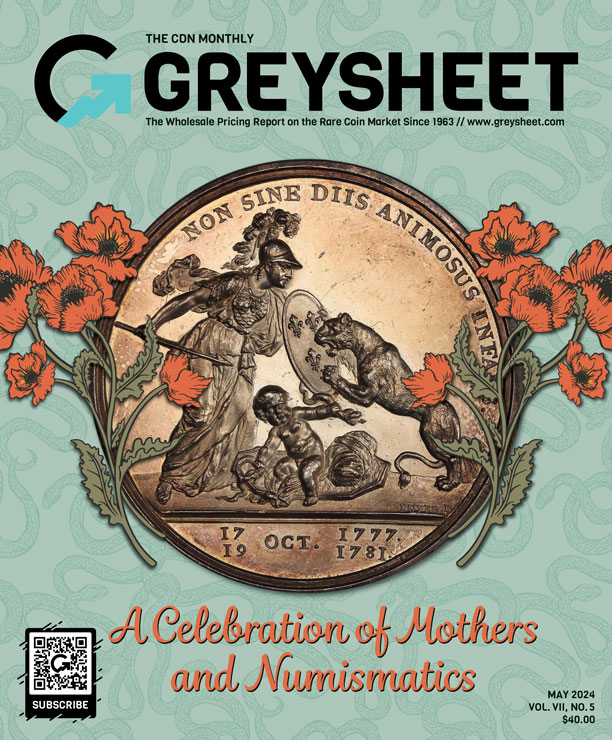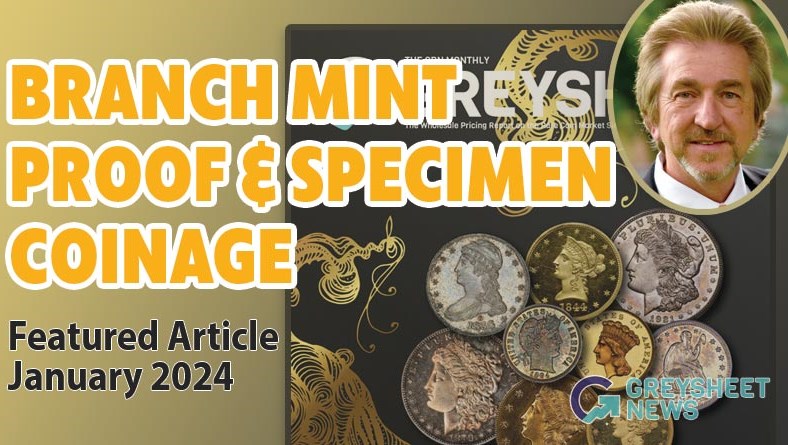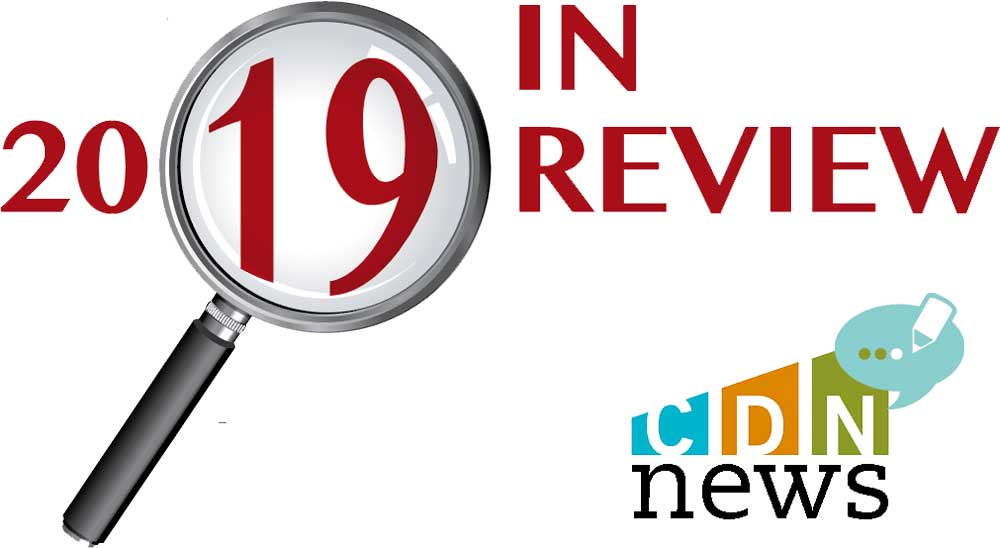The Rarity of Branch Mint Proof and Specimen Coins
Branch Mint Proof coins are an interesting subject for further study and debate by numismatic researchers. New examples have been discovered in just the last few years. Much more about these intriguing issues is yet to be known. Keep an eye out, maybe you can uncover one of these numismatic treasures!
Two of the most basic terms that anyone new to numismatics needs to understand are Business Strike and Proof. Business strike coins are those made by the mint for general circulation. Proof coins are the numismatic delicacies struck for collectors each year. In general, business strike coins are frosty in appearance and coins struck as Proof display mirror surfaces. The United States began striking regular issue coinage in 1793. Proof coins are generally believed to first appear around 1819. The Smithsonian collection, which has the finest group of Proof coins in the world, has a set of 1819 Proof coinage. The United States Mint still strikes millions of Proof coins each year for collectors.
The term “Proof” first appeared in Mint correspondence around 1858. Other terms, such as “Master Coin” and “Pattern” were sometimes used to describe these special coins. It is amazing to me that individuals in the United States Mint went to such extraordinary effort to create and save these incredible coins; they were obviously proud of their work. Remember, these coins were struck well before there was an active collector market for American coinage. The early run of Proof gold coins from 1821 to 1915 in the Smithsonian (previously the U.S. Mint collection) is a survival miracle. The coins were struck and saved for the collection for over 125 years! Today it is one of the most important reference collections in existence.
Prior to 1968, nearly all Proof coins made for collectors or presentation purposes were struck at the Philadelphia Mint. These are well documented after 1858, with mostly exact mintage figures provided by the Mint. On rare occasions, however, Proof coins have been struck at various Branch Mints. These coins are usually struck to recognize a special occasion or event.
In many cases there is no official documentation of why Branch Mint Proof coins were made. For others, the reason for the coins existence is easy to assume, such as the last or first year of issue for the design. It is my guess that some were struck for collectors with insider Mint connections as well. Regardless of why many of these coins were struck, they are among the most intriguing and ultra rare coins ever created by the United States Mint. Most are out of reach for average collectors, but everyone can agree they are quite interesting. The following is a brief overview of many of the known Branch Mint Proof coins struck by the United States Mint prior to 1968.
1839-O Seated Dime: One or two examples of this issue exist. An NGC SP65 example sold in 2012 for about $50,000. While many branch mint proofs were struck for a special occasion, there is no obvious commemoration associated with this issue. Probably struck as one of the first of denomination from the New Orleans Mint.
1876-CC Seated Dime: There are surprisingly, four or five examples of this issue known. No one knows the reason for the coins having been struck. These are quite popular, and have sold for over $100,000. One example is also known in copper, that coin being sold in 2020 for $49,500 at auction.
1891-O Seated Dime: One or two probably struck to mark the end of Seated Dimes struck in New Orleans. An NGC PR66 example was sold at auction in 2014 for $129,250.
1894-S Barber Dime: This issue is one of the most famous United States coins ever produced. Supposedly, 24 coins were struck and there is great debate as to whether the coins were struck as Proofs. The surfaces vary on the known examples, and the issue is unresolved. At least one or two of the known examples are unquestionably Proof in my opinion. Choice examples of this great rarity sell solidly in the seven figures! A PCGS PR66 example sold for $1,997,500 in January 2016.
1875-S Twenty Cent Piece: There are two three examples of this issue that are clearly struck for special purposes. The coins have mirror surfaces, and very broad and sharp rims. The coins are not as fully mirrored however as the Philadelphia issues. These were probably struck to mark the first of the denomination from the San Francisco Mint. A choice PR64 example sold at auction for $103,500 in 2004.
1855-S Seated Quarter: This extremely rare coin is represented by a single known example. For some reason, the San Francisco Mint struck a Proof set for the year 1855! Other denominations are known of this issue as well and will be mentioned later. The known example is fully mirrored and there is no doubt of its Proof status. The coin sold at auction in 2013 for $176,000.
1838-O Bust Half Dollar: This issue in another great U.S. classic and is highly desirable. The reported mintage figure for the issue is 20 examples, but none were struck for general circulation. Interestingly several examples are known that have been circulated to various degrees. Choice examples have sold for over $750,000 in recent years.
1839-O Bust Half Dollar: Unlike the 1838-O, over 100,000 1839-O Bust Half Dollars were struck for circulation. There are several examples known with deeply mirrored surfaces, but with striking problems that disqualify them as true Proofs. Five or six coins have been certified as Proof examples, and these usually sell for high five figures. An NGC PR65 sold in 2017 for $211,500.
1855-S Seated Half Dollar: Two or three examples of this rare coin are known. These were clearly struck for special purposes, and are highly desirable. An NGC PR65 example sold for over $150,000 in 2014.
1892-O Barber Half Dollar: At least two examples are known with deeply mirrored surfaces indicative of a Proof or Specimen issue. They were the first Barber half dollars and the first half dollars struck in New Orleans since 1861. One of these sold in 2013 for over $100,000.
1879-O Morgan Dollar: These were struck to mark the first of the denomination from the New Orleans Mint. Four or five examples are known, with one being at the National Collection at the Smithsonian. A choice Proof example sold at auction in 2010 for nearly $200,000.
1883-O Morgan Dollar: Two or three examples of this date and mint are known to exist. NGC has certified two examples. The reason for the issue is unknown. A superb example sold for $121,000 in 1997.
1885-CC Morgan Dollar: NGC has certified one example as PR65 and the coin is a monster with deep mirror surfaces. It is an amazing example.
1893-CC Morgan Dollar: These were probably struck to commemorate the end of the denomination being struck in New Orleans. Surprisingly four or five examples are known of this really cool issue. The known coins are deeply mirrored and their Proof status is unquestioned by anyone viewing them.
1895-O Morgan Dollar: There is some debate of the true Proof status for this issue. The known coins are deeply mirrored and extremely well struck. I have seen one or two examples that are truly special, and were clearly made for presentation purposes. This issue is extremely rare in high grade for circulation examples as well. These special coins are among the most desirable for the series.

1921-S Morgan Dollar, Zerbe Proof: One or two coins of this issue are known. The coins lack the deep mirror surfaces of traditional Proof Morgan Dollars, but very closely resemble the known Zerbe Proof Dollars struck in Philadelphia. There is some debate among experts as to the Proof status of this issue.
1855-S Three Dollar: Only one example of this issue is known to exist. It first surfaced at the 1984 ANA Convention, and was purchased by me from San Francisco area coin dealer, David Stagg. The coin is deeply mirrored and unhesitatingly a true Proof. As mentioned earlier, the San Francisco Mint created special coins in the Proof format for this year. I sold the coin in 1984 for about $75,000. The coin sold in February 2023 for over $2,100,000. Not my best long term coin decision!
1844-O Half Eagle: This incredible coin is deeply mirrored, and without questions a true Proof. The coin first appeared in the 1890 sale of Lorin Parmelee. The coin later showed up in the sale of the Woodin collection. It has remained off the market for decades. It is one of the few coins that I could not round up an image of for my Encyclopedia of United States gold coins. This coin will make great headline when it shows up someday!
1844-O Eagle: This incredible coin is one of the most interesting of this series. Like the 1844-O Half Eagle, the Ten Dollar first showed up in the 1890 Parmelee sale. The coin was sold to William Woodin, and later to Virgil Brand. The coin disappeared until 1994, when it resurfaced and was purchased by the late rare coin dealer, Mike Brownlee. The coin was later handled by my late great friend Robert Lecee. This amazing coin has been certified by NGC as PR65 Ultra Cameo. Easily a multi-seven figure coin on today’s market!
1854-S Double Eagle: This amazing coin lay hidden in plain sight in the Smithsonian collection until it was first noticed by Walter Breen and Stuart Mosher in 1951. The coin has been universally declared a Proof, but in my opinion the coin would be more accurately described as a Presentation strike. The surfaces are deeply prooflike, but lack the deep, orange-peel appearance of true Proofs of the era. The coin was probably struck to mark the first of the denomination from the San Francisco Mint. Luckily for today’s collectors the coin is on display in the Legendary Coin exhibit at the Smithsonian in Washington, D.C.
1856-O Double Eagle: Although this coin might be classified by some experts as a Specimen rather than a true Proof, it deserves mention in this article. The 1856-O Double Eagle is a major rarity in any grade. The discovery of a deeply mirrored and choice example was a numismatic landmark when it was found in the 1970s. The reason for the coin having been struck is unknown. This coin sold for nearly $1.5 million dollars in 2009.
1907-D Double Eagle: The single example of this rare coin is deeply mirrored and is unquestionably a Proof. The coin was probably struck to mark the end of gold Liberty Double Eagles being struck at the Denver Mint. The lone example known has been graded by NGC as PR62 and sold for $188,000 in 2012. Several others have been certified as Specimens, and researchers are still debating their status. Recently, this past November a PCGS PR62 example sold for $432,000.
Branch Mint Proof coins are an interesting subject for further study and debate by numismatic researchers. New examples have been discovered in just the last few years. Much more about these intriguing issues is yet to be known. Keep an eye out, maybe you can uncover one of these numismatic treasures!

Download the Greysheet app for access to pricing, news, events and your subscriptions.
Subscribe Now.

Subscribe to Monthly Greysheet for the industry's most respected pricing and to read more articles just like this.
Author: Jeff Garrett











